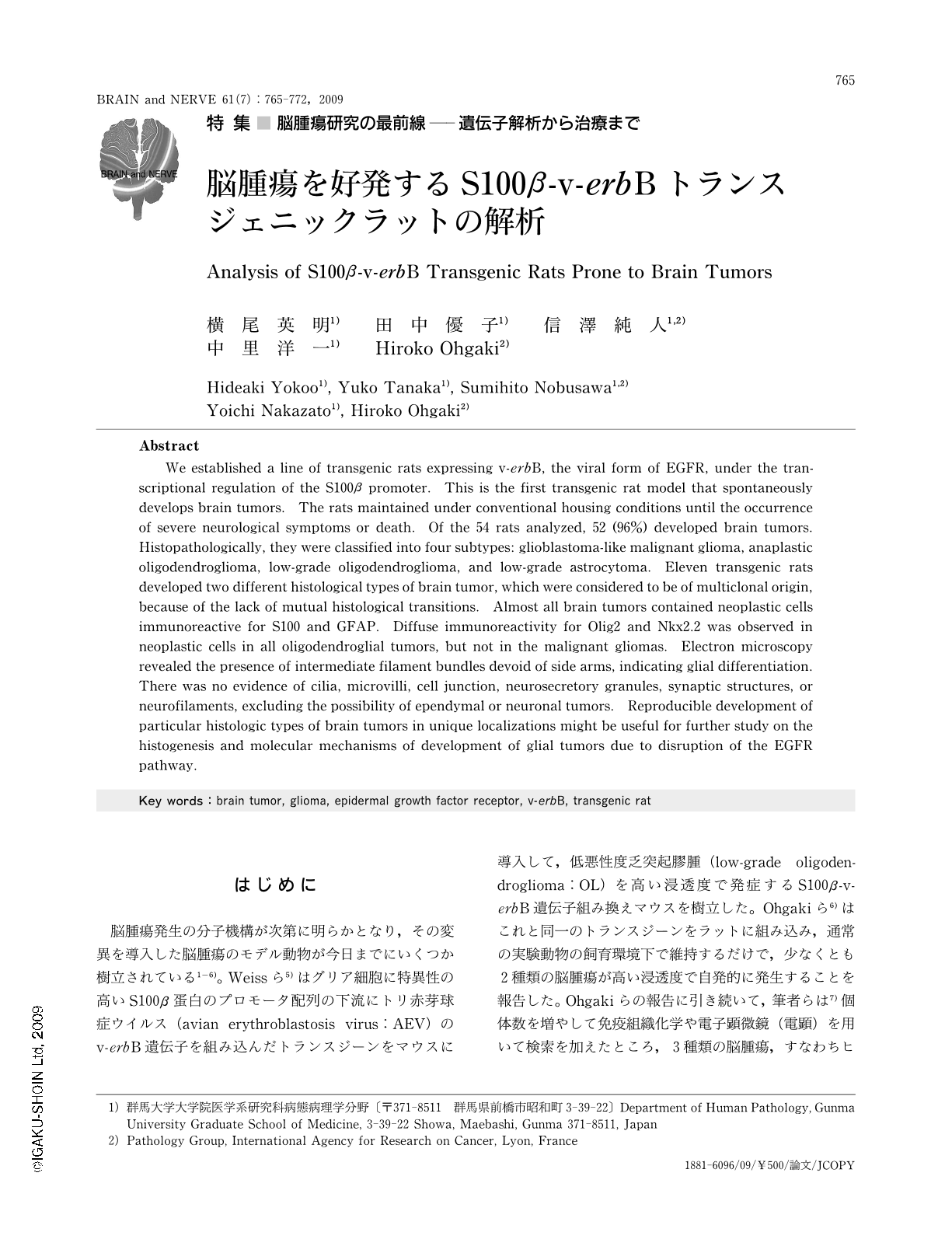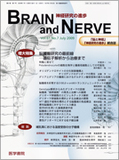Japanese
English
- 有料閲覧
- Abstract 文献概要
- 1ページ目 Look Inside
- 参考文献 Reference
はじめに
脳腫瘍発生の分子機構が次第に明らかとなり,その変異を導入した脳腫瘍のモデル動物が今日までにいくつか樹立されている1-6)。Weissら5)はグリア細胞に特異性の高いS100β蛋白のプロモータ配列の下流にトリ赤芽球症ウイルス(avian erythroblastosis virus:AEV)のv-erbB遺伝子を組み込んだトランスジーンをマウスに導入して,低悪性度乏突起膠腫(low-grade oligodendroglioma:OL)を高い浸透度で発症するS100β-v-erbB遺伝子組み換えマウスを樹立した。Ohgakiら6)はこれと同一のトランスジーンをラットに組み込み,通常の実験動物の飼育環境下で維持するだけで,少なくとも2種類の脳腫瘍が高い浸透度で自発的に発生することを報告した。Ohgakiらの報告に引き続いて,筆者らは7)個体数を増やして免疫組織化学や電子顕微鏡(電顕)を用いて検索を加えたところ,3種類の脳腫瘍,すなわちヒトにおける悪性グリオーマ(malignant glioma:MG),退形成乏突起膠腫(anaplastic oligodendroglioma:AO),OLに区別されることを明らかにした。その後の検索で,第4の組織型として低悪性度星状細胞腫(low-grade astrocytoma:AS)も見出された。
このようにS100β-v-erbBトランスジーンを組み込んだマウスおよびラットは,ヒトのグリオーマモデルとして興味ある知見を与えてくれている。本稿では脳腫瘍モデル動物を樹立するに際してv-erbBを導入した意図をまず説明し,引き続いてこれまで得られているラット脳腫瘍の病理学的ならびに遺伝学的知見を提示して,最後に今後の研究の展望について述べる。
Abstract
We established a line of transgenic rats expressing v-erbB,the viral form of EGFR,under the transcriptional regulation of the S100β promoter. This is the first transgenic rat model that spontaneously develops brain tumors. The rats maintained under conventional housing conditions until the occurrence of severe neurological symptoms or death. Of the 54 rats analyzed,52 (96%) developed brain tumors. Histopathologically,they were classified into four subtypes: glioblastoma-like malignant glioma,anaplastic oligodendroglioma,low-grade oligodendroglioma,and low-grade astrocytoma. Eleven transgenic rats developed two different histological types of brain tumor,which were considered to be of multiclonal origin,because of the lack of mutual histological transitions. Almost all brain tumors contained neoplastic cells immunoreactive for S100 and GFAP. Diffuse immunoreactivity for Olig2 and Nkx2.2 was observed in neoplastic cells in all oligodendroglial tumors,but not in the malignant gliomas. Electron microscopy revealed the presence of intermediate filament bundles devoid of side arms,indicating glial differentiation. There was no evidence of cilia,microvilli,cell junction,neurosecretory granules,synaptic structures,or neurofilaments,excluding the possibility of ependymal or neuronal tumors. Reproducible development of particular histologic types of brain tumors in unique localizations might be useful for further study on the histogenesis and molecular mechanisms of development of glial tumors due to disruption of the EGFR pathway.

Copyright © 2009, Igaku-Shoin Ltd. All rights reserved.


